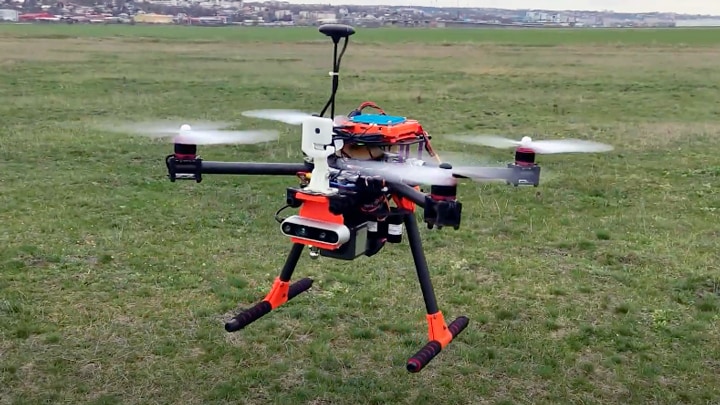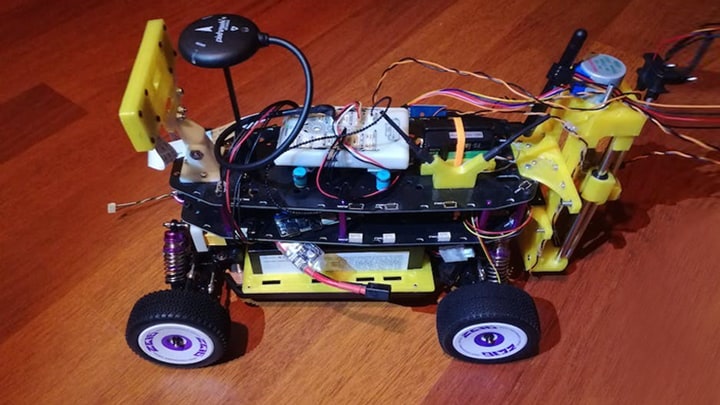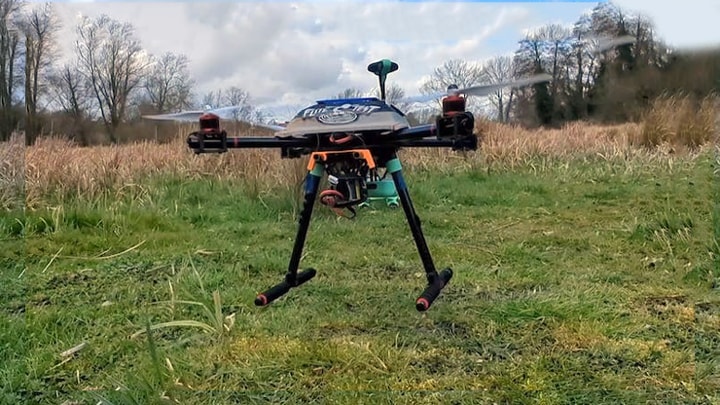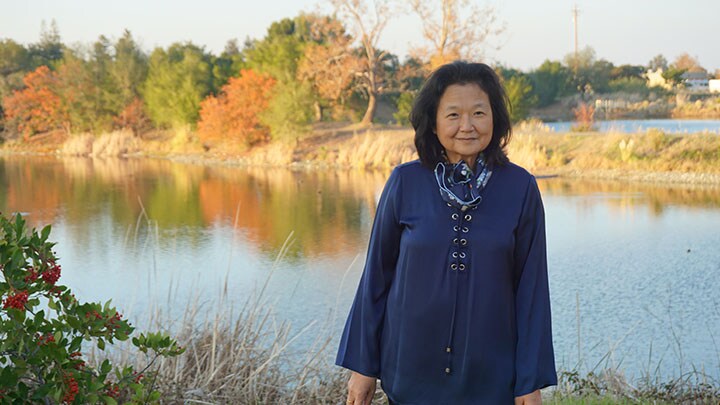Author

Matthias Wilkens
Matthias is responsible for global university programs. Particularly Matthias is managing the HoverGames, North American EcoCar challenge and the EMEA NXP CUP.

To meet growing demand, agriculture —one of the world’s largest industries— must continue to evolve by further embracing innovation. The global population is growing continually, as is the need for more sustainable food, so this year’s HoverGames Challenge theme was “Sustainable Food Ecosystems.” As technology can play a key role in this, the 440 participants set out to tackle some of the food industry’s pressing issues.
There are immense opportunities through which smart technologies can make farming more sustainable. Although such opportunities may seem complex, the potential impact of "smart farming" on our lives cannot be underestimated. In exploring new types of farming, food production and supply chain management, governments and industry bodies are learning that innovation in these critical areas may improve the development and health of crops, as well as the quality of produce. Achieving this requires out-of-the-box thinking on a variety of issues, including soil quality, air humidity, pest infestation and mineral insufficiency. HoverGames3 attempted to contribute to the innovation process by exploring how drones and rovers can be used to maintain sustainable food systems.
Timely and accurate monitoring can help reduce the spread of crop diseases and ensure healthy crop development, saving potential economic losses for farmers. The first-placed project, agriHoverGames, stemmed from the notion that various crop diseases can be identified by the structure, shape and color of leaves. The project was designed to assess the healthiness of vines using AI/ML capabilities. NXP’s i.MX 8M Plus development board enabled the assessment, while at the processor level, the drone’s functionalities were implemented with the support of NXP’s ROS 2.

Dan Marius Dobrea, the project owner and winner of HoverGames3, explains how his innovation works. “The most important component was i.MX 8M Plus development—now under the name of NavQPlus. This is a small but powerful Linux computer with a neural processing unit able to run the deep neural network on it and also to run the robotic operating system on the Arm processing units. In short, this system was the brain of the robotic drone system developed. Without the NavQPlus, the system would have been only a proof of concept. Based on this development system and the neural processing unit, it became a real-time identification system—a complete solution.” A stand-out feature of the project is that it can be deployed to monitor the health of fruit trees, maize, rice or any other plant. Read more about it here.
Specialized for machine learning and vision, advanced multimedia and industrial automation. Discover the features of the highly reliable i.MX 8M Plus family for your development.
Decreasing soil fertility is an obvious concern for farmers. An increase in soil salinity, the shift of pH levels and topsoil erosion are some of the contributing factors that possibly cause lower crop yields. In the second position of HoverGames3, the AutoSQA project, an autonomous rover, aimed to facilitate soil sampling and monitoring. By using a sensor platform, the rover is able to scan the soil and provide insights into soil properties.

NXP NavQPlus with ROS 2 nodes enabled the autonomous function of AutoSQA. The project also used the NXP MR-Buggy3 as the robotics platform. As a relatively inexpensive monitoring solution, it can allow farmers (including small-scale farms) in developing nations to adequately analyze their soil and prevent or remedy the degradation of soil fertility. Learn more about the project.
The increasing use of smart tech in agriculture is making farming more efficient and cost-effective. An area with great potential is crop mapping and survey, which sometimes adds to farmers’ workloads. The adoption of drones for this purpose can save farmers time, allowing them to channel their efforts to other tasks. The Crop Mapping and Survey Drone (CMSD) project, which came third, maps farmland and crops and calculates crop heights, position and density to produce growth and distribution statistics.

The drone autonomously collects, interprets and analyzes the valuable data and presents it in a useful way to farmers for better understanding of their crops and surroundings. With edge computing, it enables the automation of relatively expensive and time-consuming activities such as scouting, crop monitoring and analysis. The prototype utilizes computer vision, statistical analysis and data visualization, and simply flies over crops, scans them and converts the image data into point clouds. Subsequently, the point clouds are analyzed to pick out crop rows and individual plants. Read more about the project here.
We believe a smarter world will be more sustainable. Find out how in our latest issue of Sustainability Stories Magazine.
The HoverGames3 Challenge has showcased some ways in which technologies can drive the development of the agriculture industry while tackling some of the industry’s pressing issues. The journey is not over yet; there is still some work to do in order to meet the increasing needs of the growing global population. For this and other social challenges, it is vital that the right opportunities are in place for innovative ideas to flourish. Also, sustainable ways of doing things must be further explored and encouraged. This is exactly what the HoverGames Challenges are about.
With initiatives such as HoverGames, NXP is providing bright minds an opportunity to harness the power of innovation in solving some of the world’s biggest challenges. Registration for the next edition of the challenge will open in Q4 2023. Catch all the latest updates on the HoverGames page.
Tags: Sustainability

Marketing Communications Specialist
Matthias is responsible for global university programs. Particularly Matthias is managing the HoverGames, North American EcoCar challenge and the EMEA NXP CUP.

December 9, 2022

October 6, 2022

September 14, 2022